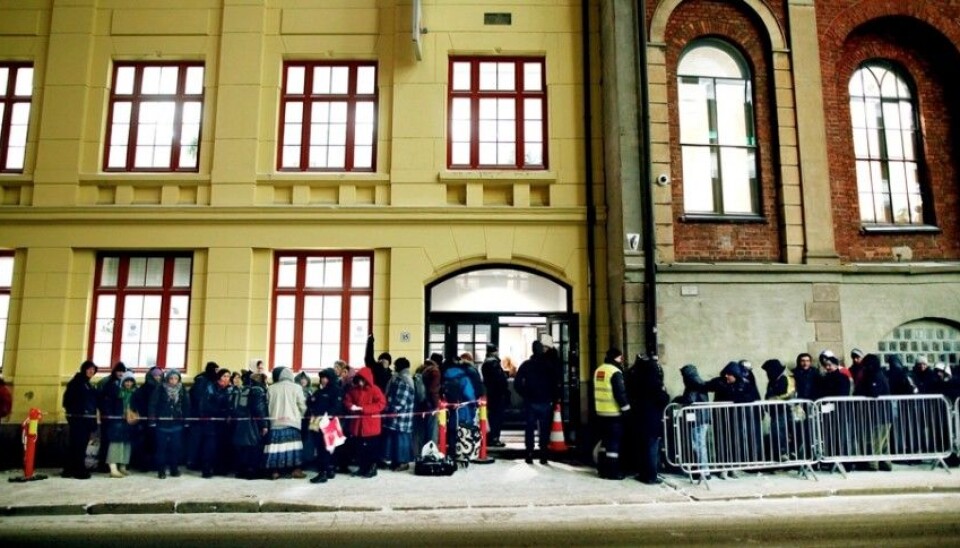
Housing first for homeless people in Norway
Homeless persons in Norway can now choose how and where they want to live.
Denne artikkelen er over ti år gammel og kan inneholde utdatert informasjon.
The first stage of treatment for drug or alcohol addictions is to sober up and break the habit. The second step is to obtain a residence. This has been the order of things in Norway among homeless persons with a substance abuse problems and/or mental diagnoses. They are not given their own digs until they overcome their habit or are undergoing treatment.
But this policy hasn’t been working all that well.
Alarmingly, the number of homeless people in Norway has not diminished. An analysis in 2012 revealed 6,200 persons with no residences. This was just a slight decrease from the previous charting of the problem in 2008.
These persons, who are often very ill, sleep on sofas of acquaintances, stay in municipal hostels and crisis centres.
Housing first

It’s time for some new angles.
A dozen municipalities in Norway have opted for a different approach. They now try out the scheme used in the USA and many European countries known as “Housing First”.
The main idea in this American model is that having a home is so indispensable for establishing stability in a person’s life that it should come first – no matter whether the person hasn’t proven motivation to change his or her lifestyle. In addition, these homeless persons should be given the opportunity to decide where they want to live.
The clients are followed up by health and welfare authorities as long as necessary and the flats they get are spread around in ordinary residential areas.
Big differences
The research institute Fafo has initiated an evaluation of these projects.
The resulting report shows wide variations in the way different municipalities run their projects.
Experiences from the USA indicate that this model is more successful than other social work and housing initiatives, explains Fafo Researcher Mette I. Snertingdal. She led the work in evaluating how the Norwegian projects are faring.
“Norway is not New York. For instance in the USA the projects are run by charitable organisations – in Norway they are municipally driven. The participants in Norway are not simply picked up off the street and placed in their own flats. Most of them are clients of the health and welfare system and thus are already receiving some sort of help.”
Many Norwegian municipalities also lack appropriate housing. This is why not all of the country’s 428 municipalities can offer such a degree of choice for homeless persons.
A person must be capable of spending 30 percent of his or her income on rent in order to use the Housing First projects. The income of most of the people in the Norwegian projects stems from social security, disability benefits or job training payments.
Close follow-ups
The goal is to get people who have been homeless back into roles where they can take care of themselves. Multidisciplinary follow-up teams are attentive in helping the clients.
These ACT (Assertive Community Treatment) teams, which are engaged in outreaching initiatives, lack psychiatrists and doctors. But most of the teams are comprised of social workers, authorized social educators, nurses and milieu therapists.
“One criterion for success appears to be whether a multidisciplinary team is on hand in the municipalities working closely with the participants and ‘piloting’ them into suitable channels of help and treatment,” says Snertingdal.
Trondheim succeeds
Snertingdal refers to Trondheim as one of the municipalities that has succeeded best to date in implementing Housing First.
For example there are 20-30 persons in the city who are frequently admitted to mental health care because of acute personality disorders, often triggered by substance abuse. These patients generally have unstable housing situations.
Homeless people in Trondheim have tended to stand last in line for a chance to enter a tight housing market. Now they can attend viewings and choose among several nice apartments.
“This gives them pride and a greater feeling of responsibility regarding taking care of their dwelling,” asserts the researcher.
Like winning the golden ticket
Snertingdal has visited and interviewed some of the persons in the project who received flats this way.
One whom the Fafo researcher spoke with was a veteran heroin addict whose biography includes years behind bars. He has moved from place to place. Now he has been to a viewing for potential tenants and selected a fine apartment in a normal and quiet community.
“It’s really moving to observe this man, who has spent years without a permanent home, now buying decorative sofa cushions and knick-knacks, keeping his ashtray clean. The homeless persons feel like they’ve won the golden ticket when they’ve been included in this project,” she says.
Nevertheless, Snertingdal does not think the project is equally suitable for everyone out on the street.
“Perhaps it’s best suited to older heroin addicts rather than the youngest and wilder and more destructive drug users. But this is something we can learn more about in the coming year,” says Snertingdal.
----------------------------------------------
Read this article in Norwegian at forskning.no
Translated by: Glenn Ostling

































